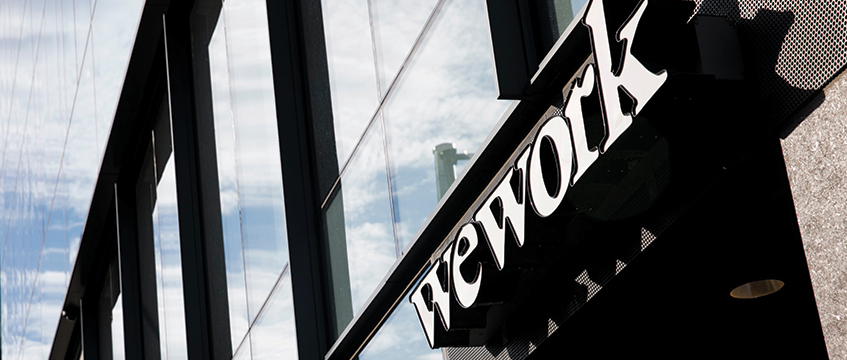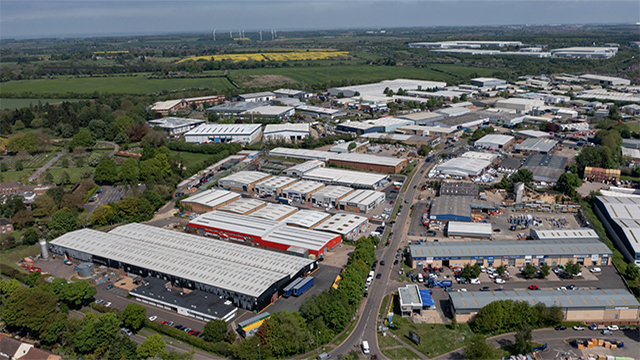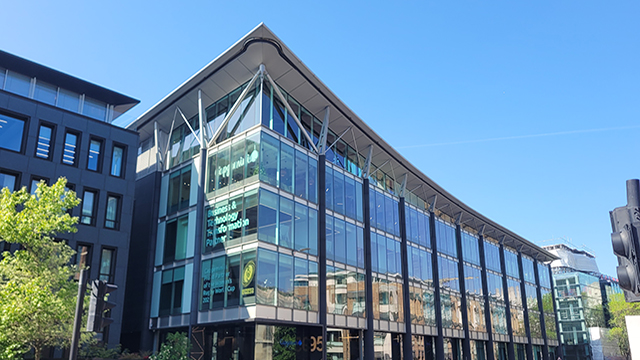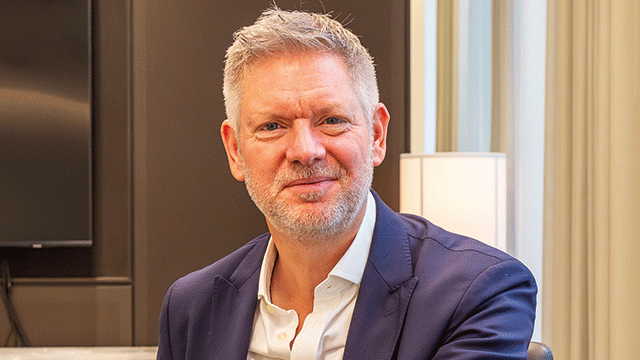WeWork: the space invader
WeWork is a bit like Marmite. There are those who love it and there are those for whom it leaves a bitter taste in their mouths. But love it or loathe it, there is no denying that it has caught the headlines over the past few years and has encouraged others – in the real estate business, at least – to direct their focus just a little bit more towards the needs of the customer.
Here, Mary Finnigan, WeWork’s head of real estate transactions for EMEA and Australia, talks about why WeWork is not a real estate company, how the business works and why nothing matters more to the business than its members.
But first, let’s take a quick look at the growth of WeWork.
WeWork is a bit like Marmite. There are those who love it and there are those for whom it leaves a bitter taste in their mouths. But love it or loathe it, there is no denying that it has caught the headlines over the past few years and has encouraged others – in the real estate business, at least – to direct their focus just a little bit more towards the needs of the customer.
Here, Mary Finnigan, WeWork’s head of real estate transactions for EMEA and Australia, talks about why WeWork is not a real estate company, how the business works and why nothing matters more to the business than its members.
But first, let’s take a quick look at the growth of WeWork.
From a standing start in New York City in 2010 (or 2008 if you include its predecessor, Green Desk), the firm, which started life as a co-working space provider, has grown into a flexible workspace provider with some 10m sq ft worldwide and much more besides.
Indeed, the recent change of name from WeWork to the We Company is a reflection that it is no longer just a space provider. A quick Google will soon show you how far the tentacles of WeWork – or the We Company – now reach. The firm, with help from the $6bn of investment from Japan-based Softbank, has acquired a whole range of businesses over the past nine years, from architecture firm Case, which uses 3D scanning to help design buildings, to coding academy Flatiron and community building platform Meetup.
The We Company now brings its WeWork flexible office space, co-housing business WeLive and educational business WeGrow together with one aim: “To create a world where people work to make a life, not just a living.”
Those words, from founder Adam Neumann, are definitely not the words of a real estate business founder.
[caption id="attachment_966828" align="alignnone" width="847"] Adam Neumann[/caption]
It is a nice idea, though. And while the mission is yet to have made the We Company a profit (latest figures showed a $1.6bn loss for the first nine months of 2018), it is a mission those within the company relish.
“Our passion is providing our membership base with the best possible experience within the WeWork community,” says Finnigan.
“It’s an obsession,” she adds later, “with member experience that informs all aspects of the business.”
Focusing on the end-user – the customer or the member – has become the hottest trend in real estate over the past 18 months. While “customer is king” has long been a slogan in the service industry, as “space as a
service” becomes one of the most overused slogans in property circles, the customer has started to polish off her crown in the real estate industry.
WeWork’s membership base is its end-user. To the wider real estate community, it is the occupier or end customer. But that word “member” is important to WeWork. Not just because it fits with the current trend, but because to the company it means that the users of its spaces – and all of the We Company’s products – are part of its growth story. By being so close to its members, WeWork says it is able to react quickly to their wants and desires and deliver without any fixed expectations.
“WeWork is a global community platform,” explains Finnigan. “Which means we provide all of the space, the technology, the services and facilitate the network for our member businesses to grow and to be successful.
“To me the notion of a customer or a tenant suggests a separation in terms of approach between the provider and the end-user, whereas for us we are a platform, we are all part of the same community. Our members are talking to each other as much as they are talking to us.”
[caption id="attachment_966830" align="alignnone" width="847"] Mary Finnigan[/caption]
Finnigan says WeWork’s network of members is becoming an ecosystem in its own right, with company surveys showing that half of its members are transacting together and 70% are talking to each other or collaborating in some way.
And while nine years ago that collaboration between members might have been between individual entrepreneurs and SMEs, today it is between those groups and some very large global players. Players such as Microsoft, GoPro, Barclays, Deloitte and Bosch to name but a few. These members – enterprise members, as the We Company labels them – now make up some 30% of the WeWork community.
“The reason they are attracted to WeWork is that they don’t want certain parts of their employee base to be so inward-looking,” says Finnigan. “They want them to be more outward-looking, to be speaking to the creators or the designers within our community and to be feeding off each other in terms of ideas.”
It stinks of utopia, doesn’t it? A place where companies big and small can come together so that people can collaborate and create, to work to create a life, not just a living.
The idea behind the brand and the ethos of it makes complete sense in a world that will no longer tolerate bland places to work, in a world where talent attraction and retention is second to making a profit for companies all around the world.
The model, however, has not, does not and may never have the full support of the entire real estate community. Indeed, it has spurred plenty of the major players either to invest in rival flexible office space players (think Blackstone and The Office Group and Brookfield and Convene) or develop their own offerings (think British Land and Storey and Landsec and Myo).
More recently it has seen some landlords walk away from leasing deals, with a deal between Worthington Group and the company for 45,000 sq ft at 125 Deansgate in Manchester collapsing after the landlord raised concerns about how the brand could affect the value of the building.
Whether WeWork likes to admit it or not, it has disrupted the office space market. And like Marmite, not everyone will like that – and not everyone in real estate will want to work alongside the new, flashy kid in town.
Finnigan remains optimistic, though. “I think the industry does recognise that we are best in class at operating and activating space,” she says. “More and more value will be ascribed to the operation and activation of space as time goes on, so we are here to partner with those who want that experiential offering in their buildings.
“There has been a deep-seated shift in the way that people work and I think that, irrespective of what happens with the economy, that shift is not going away.”
Listen to the interview with WeWork’s head of transactions of EMEA and Australia, Mary Finnigan:
To send feedback, e-mail samantha.mcclary@egi.co.uk or tweet @samanthamcclary or @estatesgazette











